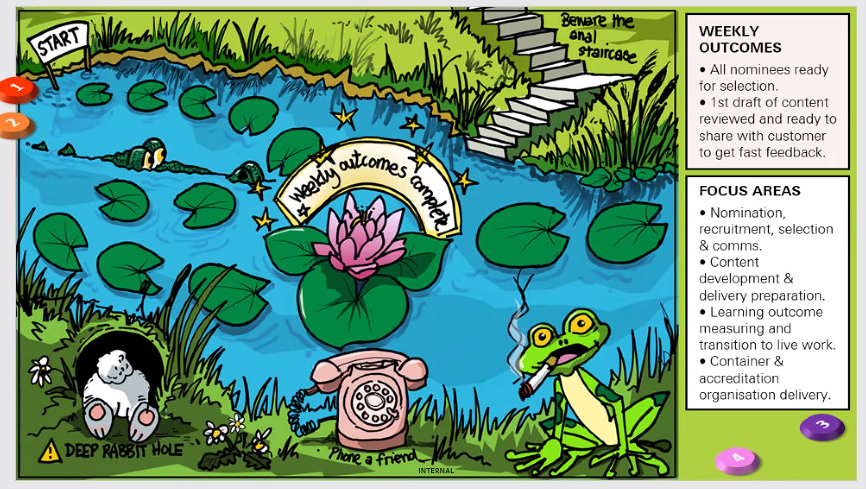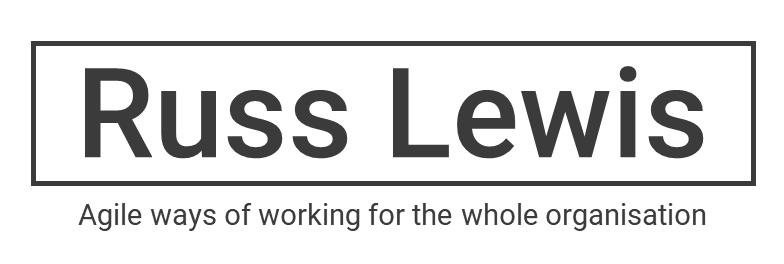In the standup, we had a (brief) team discussion about tracking progress. I reacted against Jira because a) I dislike the user interface as it's a collaboration killer, and b) we aren't a software development or IT support team.
Standup game visualises progress
Three weeks later, team members Sam Thomas and @HughHadfield demonstrated this way of visualising progress as a game:

The daily standup meeting (at which people can sit or stand) went like this: People decided where their counter should be today. They were working in pairs, so this was a chance to reflect on yesterday's progress.
What was fascinating was team member's transparency about disappearing down 'rabbit holes' and fears of being bitten by the crocodile. It had the fun of playing a game, so admitting failure became trivial. In fact, failure became such a regular occurrence that we understood it to be a normal part of making progress.
Gamifying the daily standup meeting helped this team make much better progress. Openly recognising failure as a normal (daily) occurance, allowed people to pull themselves out of the rabbit holes and crocodiles jaws they had got stuck in. The resulting daily transparency increased the team's velocity massively.







